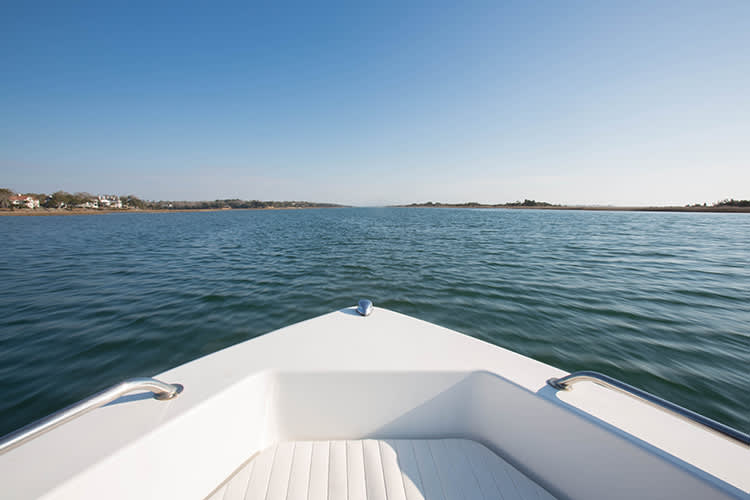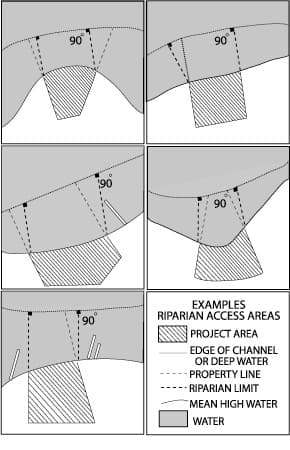By Jeff Baker
In order to fully understand what type of ownership is conveyed when purchasing a boat slip, it is helpful to first understand basic water rights in North Carolina.
Owners of real property adjacent to a body of water (riparian owners) have certain rights associated with such ownership. Those rights include: the right of access to the water, including a right of way to and from the navigable channel; the right to “wharf out” (build a pier) to the navigable water, subject to state regulations; and the right to make reasonable use of the water as it flows past or leaves the shore.
These rights are subject however to the Public Trust Doctrine. This doctrine states that the public shall have a right to the unobstructed navigation as a public highway for all purposes of pleasure or profit of all watercourses that are deemed to be navigable. The courts in North Carolina have broadly defined navigable waters to include all waters that are navigable for pleasure boating, even those only navigable by kayak or canoe.
In North Carolina the State assesses ownership of the submerged lands under navigable waters, and that the public has a right of use and enjoyment of all navigable waters. Therefore, the right to wharf out does not include the right to exclude the public from the waters in and around private piers or docks. In other words, the riparian property owner can exclude the public from the physical docks but cannot stop the public from using the water under and adjacent to said docks.
The right to wharf out is also restricted further so as not to unreasonably interfere with the correlative rights of other riparian owners. This is to mean that the riparian corridor begins where the property line reaches the shoreline and proceeds perpendicular to the deep water channel outward to the channel.
The North Carolina Division of Coastal Management provides the diagram below for determining the location of the corridor.
If a boat slip is located in a marina it is important to understand the slip can be transferred in a multitude of ways. It is important to read and understand the proposed ownership documents, and this is also a good time to seek counsel from a licensed North Carolina attorney. It is impossible to describe the legal structure all forms of boat slips, as there is no industry standard. That being said, there are three main categories by which marinas are commonly organized:
Membership. In this scenario the land, docks, structures, etc. are owned by an entity (likely a corporation). A buyer that purchases a slip receives a “membership certificate.” Although this certificate my look like a deed, it is merely a contract and does not convey any ownership of or easement over the land or docks. One must thoroughly understand the rights and obligations being transferred as many of these memberships are revokable for non-payment of assessments.
Appurtenant Boat Slips. In this scenario the slips and land adjacent to the water are owned by the subdivision owner’s association. The purchaser will be provided a deed for their lot “together with the exclusive use of slip X.” It is important to read the subdivision restrictive covenants to understand the rights and obligations that control the slips.
Boataminiums. In North Carolina, the requirements for the establishment of condominiums is dictated by general statute, Chapter 47C. Under this statute “real estate” may include spaces that are filled with air or water. In this scenario the condominium “unit” is that area bounded by the fingers of the pier on the sides, air space on the top and the river or sea bed on the bottom. In essence, creating a box filled with air on the top and water on the bottom. The piers are normally described as limited common elements and the purchaser is conveyed a real property interest in the riparian land. Again, it is important to read and understand the declaration of condominium and governing bylaws.
In conclusion, when considering purchasing a boat slip or waterfront property with the intention of constructing a pier, thorough investigation in advance is crucial. Engaging a knowledgeable real estate broker and attorney will help to ensure that the conveyance, no matter the form, satisfies your needs and expectations.
True to the Nest motto, “a new breed of broker,” Jeff Baker brings with him twelve years experience as a licensed attorney focused on real estate law. Representing thousands of buyers and sellers in real estate closing transactions as well as local builders and developers in numerous projects has given Jeff a unique perspective to real estate sales.
Written by Jeff Baker on October 6, 2015 Posted in Wilmington Tags: boat slip , Jeff Baker , North Carolina ,
water rights5 Comments


































































































